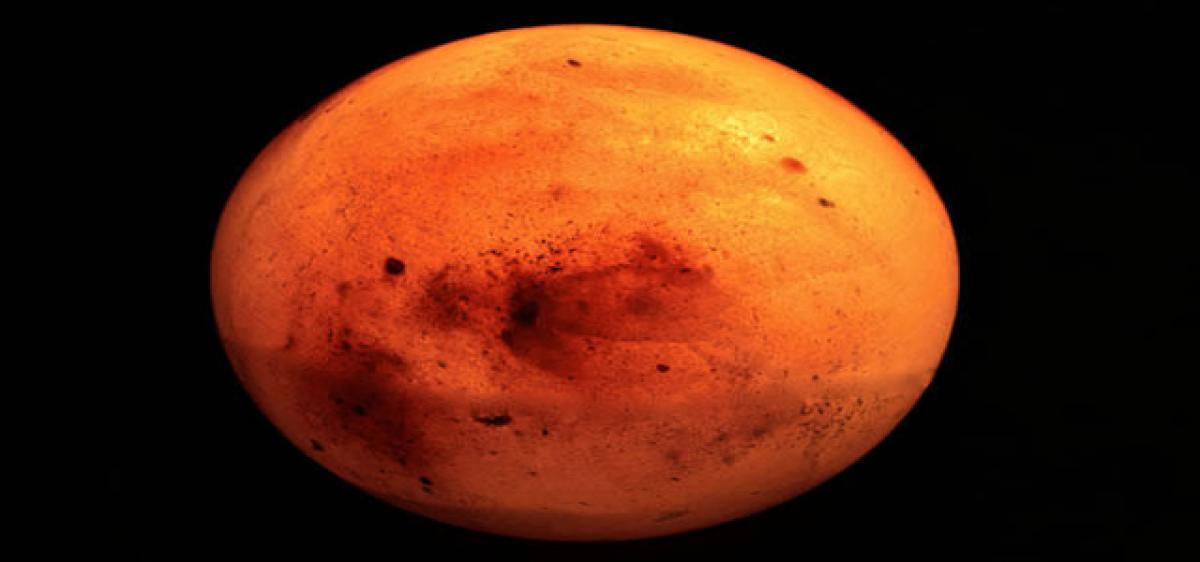Live
- Nature’s Basket opens B’lore’s largest artisan pantry store
- Top Strategies for Achieving Work-Life Balance and Well-Being
- PM Modi appreciates Early Bird’s efforts
- Wait for big meal at Indira Canteens ends in dismay
- Fishermen in distress due to lax sanitary facilities in Malpe Fisheries Harbour
- BJP, JD(S) leaders helped win Channapatna bypoll
- INS Kuthar makes maiden visit to Gopalpur Port
- PM praises city-based NGO for promoting libraries
- Odisha police rescue ‘trafficked’ Bangla girl
- iPhone 16 Plus Now at Rs. 2,000 Discount on Amazon – Get It Today
Just In

Scientist have developed a set of five instruments that can potentially advance NASAs understanding of wind and weather conditions on the surface of Mars that can help ascertain the planet\'s habitability.
Washington: Scientist have developed a set of five instruments that can potentially advance NASAs understanding of wind and weather conditions on the surface of Mars that can help ascertain the planet's habitability.
The US space agency sends rovers to the surface of Mars to photograph the landscape and operate scientific experiments to understand the habitat for humans or other kinds of life.
One of those future rover missions may host the Martian Aqueous Habitat Reconnaissance Suite (MAHRS), a set of five instruments that can take surface measurements in the search for habitable environments, NASA said.
Developed at NASA Glenn Research Centre in partnership with the University of Michigan, MAHRS is specifically focused on searching for wet brine environments in the shallow subsurface of Mars.
"Brine environments are where you would look for life," said Project Manager Dan Vento of NASA."Any water that exists today on Mars would likely be in the form of a brine if is in a liquid state," he added.
The MAHRS research hardware includes an optical microscope to study the size and characteristics of settling dust on Mars.
"The interesting feature about the microscope, is that the electronics architecture can support a camera lens or hyperspectral sensor depending on the scientific goals of the mission," Norman Prokop from NASA Glenn Research Centre said.
Mounted to the microscope, a radiometre measures the amount of solar energy absorbed at the surface to study the amount of dust in the Martian atmosphere.
Less energy making it to the surface means more dust in the atmosphere is absorbing the solar energy.
A saltation probe, which would hang vertically off the bottom of a rover, measures the impact of soil and dust swirling on the Martian surface.
Because it is close to the ground, it can measure the impact, mass and velocity of soil as it hits the probe, giving researchers an indication of wind energy and soil movement.
The scientists also developed a soil wetness sensor, which measures water content on the surface and detects the formation of liquid brine.
And finally, Michigan engineers are testing an electric field sensor to measure electrical charges in the atmosphere caused by airborne dust, NASA said. As it sits and spins on a rover arm, it will measure weather patterns and indicate the level of erosion on Mars.
As NASA seeks to develop more sophisticated scientific devices for solar system exploration, this integrated suite of instruments can potentially advance understanding of wind and weather conditions on the surface of Mars and the implications for habitability.

© 2024 Hyderabad Media House Limited/The Hans India. All rights reserved. Powered by hocalwire.com







